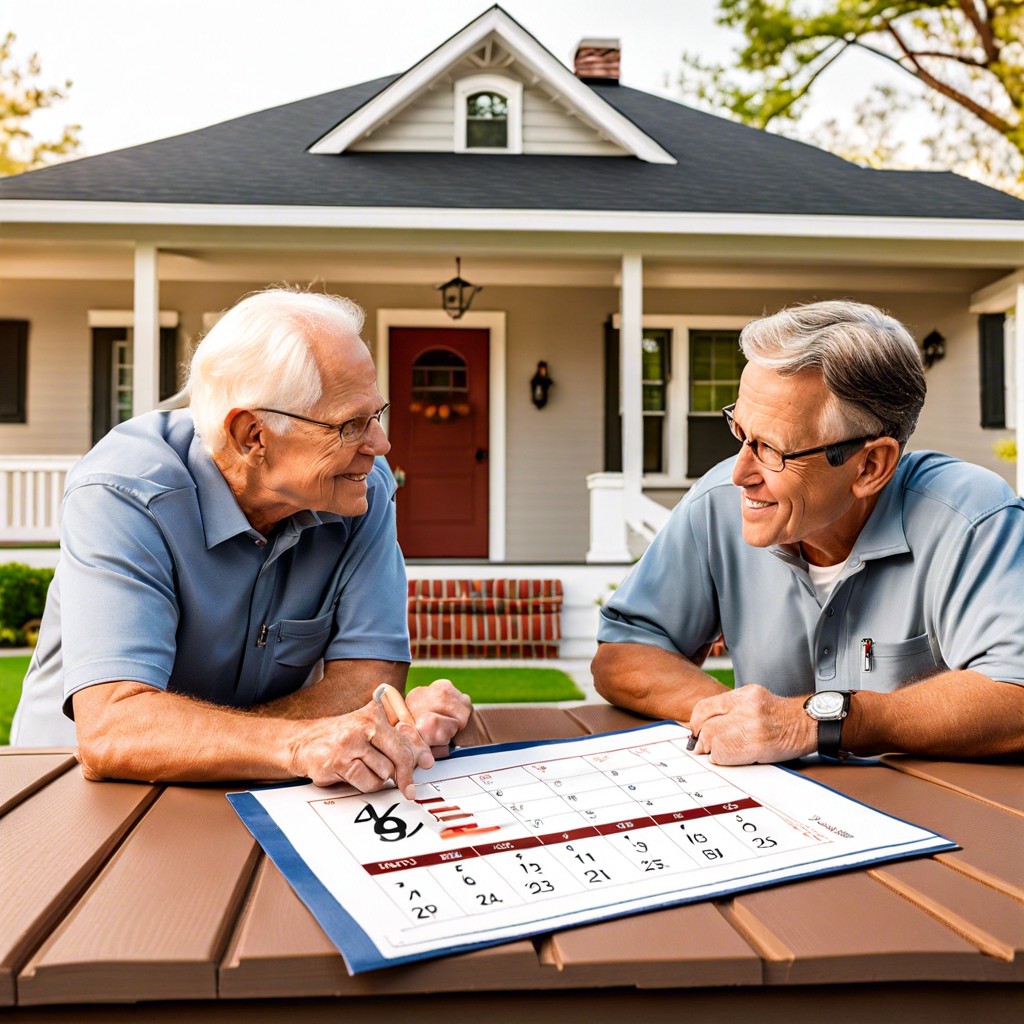Last updated on
Determining the age of your roof can be challenging, but this informative guide will walk you through the key steps and signs to look for in the task.
Key takeaways:
- Ask the previous owners for information
- Find the building permit
- Get an estimate from a professional
- Identify visible signs of roof damage or aging
- Plan for replacing the roof
Ask the Previous Owners

Initiating a dialogue with the home’s prior owners can be an excellent starting point to ascertain the age of the roof. While not all owners keep detailed records, some may recall when the last roofing work was done.
To make the most out of this interaction, consider asking for any documents they might have that pertain to roof repairs or replacement. These could be in the form of receipts, warranties, or contracts from roofing companies, which often include the date of service. This information not only gives an insight into the roof’s age but also provides a glimpse into its maintenance history.
Keep in mind that older homes might have undergone several roofing projects, so seek specifics on the most recent work done.
Find the Building Permit
Locating the original building permit can offer a precise age of your roof’s installation. Typically, building permits are public records; therefore, you can request access to these documents from your local city or county government office.
Often, these offices have online databases, providing a convenient method for search. When examining the permit, look for the date of issue, as this generally aligns closely with construction and roofing installation dates.
If you have difficulty navigating public records, contact the building department for assistance. They may provide you with direct access or guide you through the retrieval process.
Keep in mind that if the roof has been replaced since the original construction, the building permit will only provide the age of the home, not the current roof.
Get an Estimate From a Home Inspector or Roof Company
Professional assessments from a home inspector or roofing company can provide you with a precise age estimate. Inspectors have the expertise to identify the materials and installation techniques which hint at the roof’s period. Additionally, roofing companies often keep records of the products they install, which can be cross-referenced for an accurate age.
They’ll scrutinize wear and tear patterns, assess shingle integrity, and spot any decay that could point to the roof’s lifespan. When seeking these experts, ensure they are licensed and hold a reputable status within the industry to guarantee reliable information. After their evaluation, they should offer a report which outlines their findings and gives you a clearer picture of your roof’s age.
Identify Visible Signs of Roof Damage or Aging
Curling or missing shingles are telltale indicators that a roof is aging. Look for granules – resembling coarse, black sand – in gutters, a sign of shingle breakdown.
If you notice sagging or feel soft spots while walking on the roof, this may signal underlying damage to the decking due to moisture.
Additionally, frequent leaks or daylight visible through the roof boards in the attic are signs of a deteriorating roof.
Flashing around chimneys, vents, and skylights should be intact; rusting or cracking here can lead to leaks.
Remember, consistent maintenance can extend roof life, but these signs suggest a professional evaluation to determine the roof’s condition and remaining lifespan.
Plan for Replacing the Roof
Understanding the age of your roof is key for timely replacement and can prevent costly repairs or damage to your home. Once you estimate the age of your roof and recognize signs indicating it’s nearing the end of its service life, such as curling shingles, frequent leaks, and missing granules, you should start planning for a new roof.
Firstly, begin by setting aside a budget for the project. Research and compare different roofing materials, considering durability, cost, and aesthetic appeal for your specific home. Next, contact multiple licensed roofing contractors for quotes to ensure you receive a fair price and high-quality work. Also, inquire about warranties and insurance to protect your investment.
Lastly, consider the timing of the project to avoid rainy seasons or extreme weather conditions that could delay completion or compromise the installation process. Proactive planning ensures a smooth and successful roof replacement when the time comes.
FAQ
What is the age of a shingle roof?
The age of an asphalt shingle roof typically ranges between 20 to 30 years, depending on factors like climate, installation quality, material quality, and maintenance.
Is a 20 year old roof too old?
A roof that is 20 years old is not necessarily too old but is approaching the upper limit of the average lifespan for an asphalt shingle roof, so consideration for replacement would be advisable.
Does a 30 year roof last 30 years?
While a 30-year roof is designed to last up to 30 years, it typically lasts around 20 years with regular inspection and maintenance, but this timeframe can reduce to 15 years if neglected.
How can you estimate the age of a tiled roof?
To estimate the age of a tiled roof, check the records of roof installation or replacement, inspect the tiles for signs of wear, discoloration, or damage, and consider the average lifespan of the specific type of tile used.
Is a 50-year-old metal roof considered outdated?
A 50-year-old metal roof is not necessarily outdated, as the lifespan of a metal roof can range from 40 to 70 years depending on its maintenance and environmental conditions.
What factors impact the lifespan of a slate roof?
The lifespan of a slate roof is influenced by factors such as the quality of materials used, the expertise of the installation crew, the roof’s slope, the local climate, and the level of maintenance provided.




